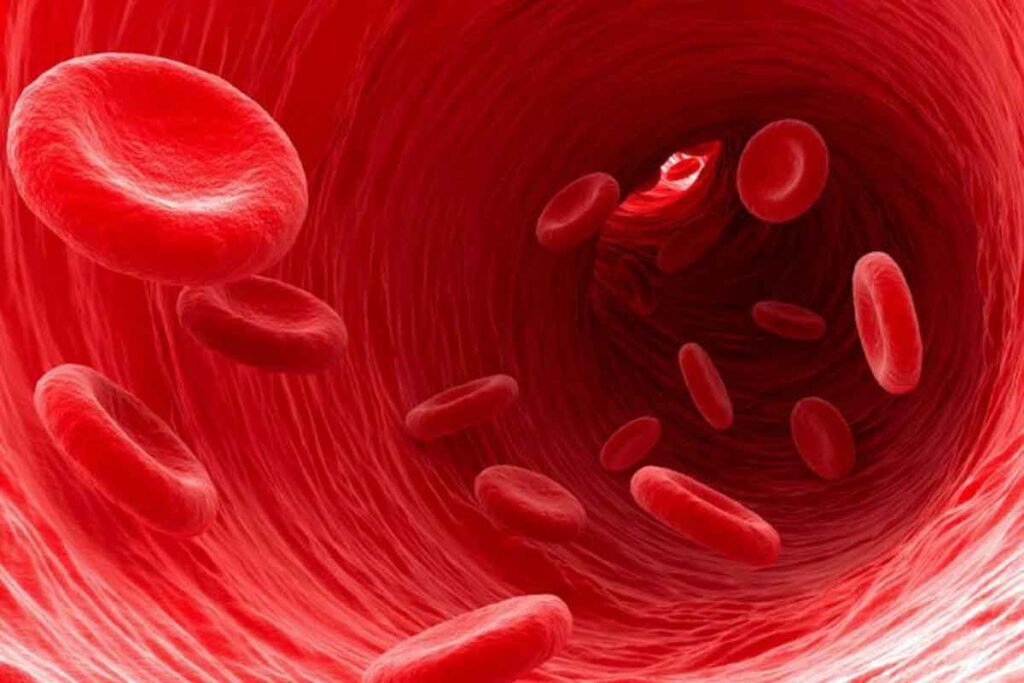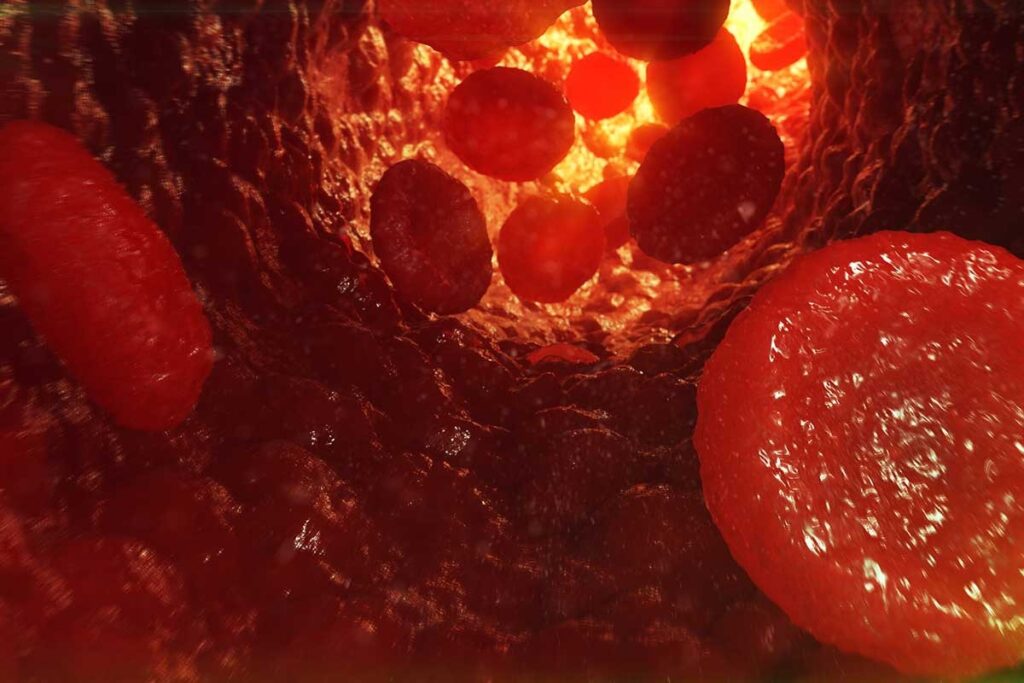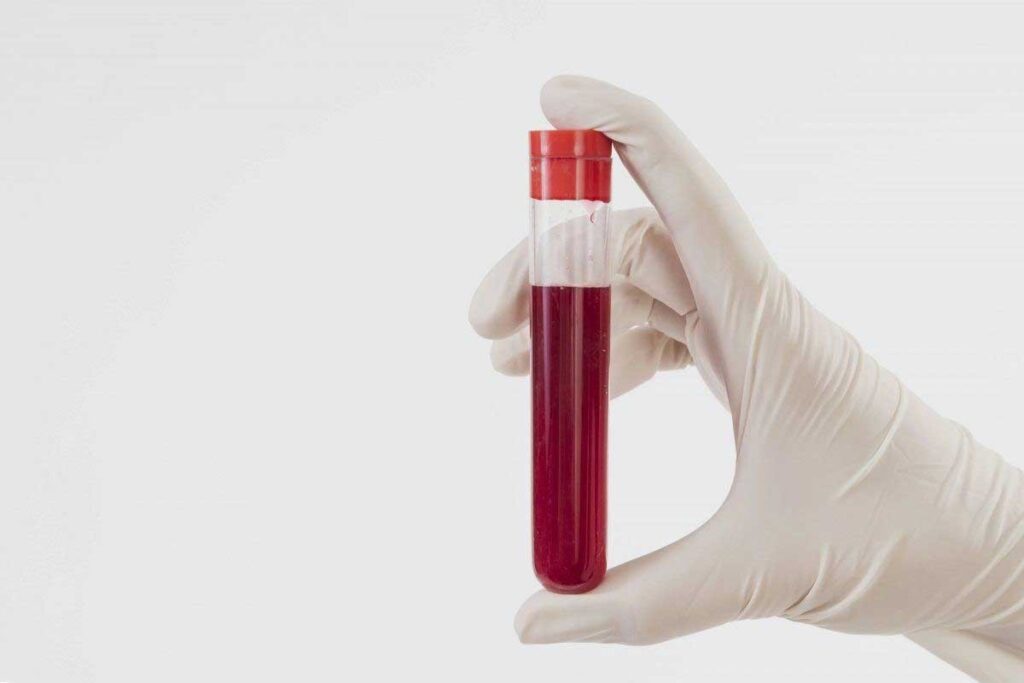Last Updated on October 21, 2025 by mcelik

Imagine if your body suddenly stopped making red blood cells. This would quickly lead to severe anemia, causing tissues to lack oxygen. Anemia happens when you don’t have enough red blood cells, affecting your body’s function. It can be mild or serious, depending on the type of anemia.Find out what happens if my body stopped producing red blood cells. Learn the serious causes of this anemia and the crucial types.
Red blood cells are key because they carry hemoglobin. Hemoglobin is a protein that brings oxygen to all parts of the body. Without enough, you might feel tired, weak, and have trouble breathing. At Liv Hospital, we look into the causes of anemia, its types, and why keeping blood healthy is so important.

Red blood cells mainly carry oxygen bound to hemoglobin, a protein vital in anemia. Hemoglobin’s role is to transport oxygen from the lungs to our body’s tissues. Without enough red blood cells or working hemoglobin, our body’s tissues would lack oxygen.
Hemoglobin count is a key lab value for diagnosing anemia. Normal counts vary between men and women. Abnormal counts can show different types of anemia. Knowing how hemoglobin transports oxygen helps us see why red blood cell count is important for health.
| Parameter | Normal Value (Men) | Normal Value (Women) |
| Hemoglobin (g/dL) | 13.8-17.2 | 12.1-15.1 |
| Hematocrit (%) | 40.7-50.3 | 36.1-44.3 |
| RBC Count (million cells/μL) | 4.32-5.72 | 3.90-5.03 |
The life cycle of red blood cells includes production in the bone marrow, circulation in the blood, and destruction after about 120 days. Knowing this cycle is key to diagnosing and managing anemia. Problems in production or destruction can cause different types of anemia.
Monitoring lab values in anemia, like hemoglobin count and RBC count, helps doctors diagnose and manage anemia. Understanding the role of red blood cells and their life cycle helps us grasp the complexity of anemia and its health impact.

If your body stops making red blood cells, it can’t deliver enough oxygen to your body’s tissues and organs. Red blood cells carry oxygen to all parts of your body. Without new cells, your body’s oxygen levels drop quickly.
Stopping red blood cell production means your body can’t get enough oxygen. This leads to a chain of problems as your body tries to make up for the lack of oxygen. Tissues and organs start to get too little oxygen, causing symptoms.
At first, your heart beats faster to try and get enough oxygen to your body. But this can put a lot of strain on your heart.
Oxygen shortage, or hypoxia, hits different parts of your body in different ways. Parts like your heart and brain are very sensitive to even a little less oxygen.
| Organ/Tissue | Effect of Oxygen Deprivation |
| Brain | Dizziness, confusion, and potentially loss of consciousness |
| Heart | Increased heart rate, potentially heart failure |
| Muscles | Fatigue, weakness, decreased performance |
Anemia symptoms can get worse over time. At first, you might just feel tired and weak. But, as it gets worse, you could have trouble breathing, pale skin, and even life-threatening problems.
It’s important to know how anemia gets worse. If your symptoms don’t go away or get worse, you need to see a doctor.
Anemia is a common health issue where the body has too few red blood cells or hemoglobin. It’s not a disease but a sign of another problem. It can be caused by many things, like not enough iron or vitamins, chronic diseases, or genetic issues.
Anemia is a big health problem worldwide. It hits hard on women of childbearing age, kids, and people with long-term illnesses. It makes people feel tired, weak, and less productive.
Anemia means having fewer red blood cells or less hemoglobin. Hemoglobin is key to carrying oxygen. If hemoglobin levels are too low, it’s anemia. This can happen due to not getting enough nutrients, chronic diseases, or inherited traits.
To diagnose anemia, doctors do blood tests. These tests check hemoglobin and red blood cell counts. Knowing the different types of anemia is key to treating it right. The main types are:
In the U.S., anemia affects about 9.3% of people. Worldwide, it’s even more common, hitting some groups harder than others. Women, young kids, and those with long-term illnesses are at higher risk.
Anemia can really affect someone’s life. Symptoms can be mild or severe, like feeling tired, weak, and pale. In bad cases, it can cause heart problems and poor pregnancy outcomes. Treating anemia means knowing what causes it and how to fix it.
Anemia is a significant public health challenge that requires a broad approach to prevention and treatment. Knowing its causes and effects is the first step to better health and well-being for those affected.”
By understanding anemia, we can help those who have it. This improves their lives and health.
Knowing the difference between normal and anemic blood values is key to correct diagnosis and treatment. Anemia is when you don’t have enough red blood cells or they’re not good enough. It can really affect your life. Doctors use blood tests to check things like hemoglobin levels and red blood cell counts to spot anemia.
Hemoglobin is a protein in red blood cells that carries oxygen. The normal levels vary by age, sex, and other factors. For adult men, it’s above 13.5 g/dL. For women, it’s above 12.0 g/dL. If your levels are lower, you might have anemia.
It’s important to remember that these numbers can change based on the lab and your health. For example, pregnant women or people living at high altitudes might have different ranges.
| Category | Normal Hemoglobin Range (g/dL) |
| Adult Men | > 13.5 |
| Adult Women | > 12.0 |
RBC indices give important information about red blood cells. They help doctors understand the type of anemia you might have. The main indices are Mean Corpuscular Volume (MCV), Mean Corpuscular Hemoglobin (MCH), and Mean Corpuscular Hemoglobin Concentration (MCHC).
Anemia is categorized by how low your hemoglobin levels are. The scale goes from mild to severe. Knowing how severe your anemia is helps doctors choose the right treatment.
| Anemia Severity | Hemoglobin Level (g/dL) |
| Mild | Just below normal range |
| Moderate | Significantly below normal range |
| Severe | Very low, often |
By understanding normal vs. anemic blood values, doctors can accurately diagnose anemia. They can then create treatment plans that fit your needs.
Anemia falls into three main types: production-based, destruction-based, and blood loss anemias. Knowing these categories helps doctors diagnose and treat anemia better.
Production-based anemias happen when the bone marrow can’t make enough red blood cells. This can be because of:
These issues stop the bone marrow from making red blood cells, causing anemia.
Destruction-based anemias, or hemolytic anemias, happen when red blood cells are destroyed too fast. Causes include:
In these cases, red blood cells are destroyed quickly than they can be made, leading to anemia.
Blood loss anemias occur when there’s a lot of blood loss, either suddenly or over time. This can be due to:
Blood loss reduces the body’s red blood cell count, causing anemia if not treated.
Understanding these main types of anemia helps doctors create specific treatment plans. This addresses the root cause of the condition.
Iron-deficiency anemia is the most common anemia worldwide, affecting millions. It happens when the body doesn’t have enough iron to make hemoglobin. Hemoglobin is key to red blood cells. We’ll look at what causes it, who’s at risk, and its symptoms.
Many things can lead to iron-deficiency anemia. Inadequate dietary intake is a big reason, mainly for those who don’t eat enough iron-rich foods. Chronic blood loss is another, seen in women with heavy periods or those with bleeding in the gut. Women who are pregnant also need more iron, making them more at risk.
Other factors include gastrointestinal disorders that make it hard to absorb iron, like celiac disease or Crohn’s disease. People who have had gastric bypass surgery also face a higher risk because their digestion changes.
The signs of iron-deficiency anemia start mild but can get worse if not treated. Common signs are fatigue, weakness, and shortness of breath. Some people might also notice pale skin, dizziness, or cold hands and feet.
To diagnose it, doctors use blood tests to check hemoglobin and iron levels. A complete blood count (CBC) is usually the first test. Then, more tests might be needed to find out why the anemia is happening. Knowing the causes and symptoms is key to treating it well.
Even with normal iron levels, anemia can happen. Other nutritional issues and chronic diseases play a role. Anemia means not enough healthy red blood cells to carry oxygen to the body’s tissues. Iron deficiency is common, but it’s not the only cause.
Anemia of chronic disease is linked to long-term illnesses like infections, cancer, and autoimmune diseases. These conditions cause inflammation. This inflammation makes it hard for the body to make red blood cells.
We will look at how chronic diseases affect red blood cell production. We’ll also cover how this type of anemia is diagnosed and treated.
Vitamins B12 and folate are key for making red blood cells. Without enough, red blood cells are larger and don’t work well.
Causes of these deficiencies include:
Endocrine disorders can also affect red blood cell production, leading to anemia. For example, hypothyroidism can cause a decrease in the production of red blood cells, resulting in anemia.
Some key endocrine-related causes include:
Understanding the various causes of anemia beyond iron deficiency is key. Recognizing the role of chronic diseases, nutritional deficiencies, and endocrine disorders helps healthcare providers. They can then offer more targeted and effective care for patients with anemia.
Aplastic anemia happens when the bone marrow can’t make enough blood cells. This includes red blood cells, white blood cells, and platelets. It’s a serious condition where the bone marrow fails to produce these cells, causing health problems.
The bone marrow’s failure to make blood cells is at the heart of aplastic anemia. This can be caused by toxins, certain drugs, viral infections, and autoimmune disorders. Sometimes, the exact cause is not known.
Several factors can lead to aplastic anemia:
Symptoms of aplastic anemia include fatigue, infections, and bleeding. Doctors diagnose it through blood tests and a bone marrow biopsy.
Here are the key diagnostic criteria:
| Diagnostic Criteria | Description |
| Blood Tests | Complete Blood Count (CBC) shows low counts of red and white blood cells, and platelets |
| Bone Marrow Biopsy | Examines bone marrow tissue to check cell count and look for abnormalities |
Treatment for aplastic anemia depends on how severe it is and what caused it. Options include supportive care, immunosuppressive therapy, and bone marrow transplantation.
Here are the treatment options:
The outlook for aplastic anemia varies. It depends on how severe it is and how well the treatment works. With the right treatment, many people see a big improvement in their quality of life.
When red blood cells are destroyed faster than they can be made, hemolytic anemia occurs. This is a complex challenge for diagnosis and treatment. Hemolytic anemias are a diverse group of conditions. They are caused by genetic disorders, infections, medications, or autoimmune diseases.
Sickle cell anemia is a genetic disorder that affects hemoglobin production. It causes red blood cells to be misshapen (sickle-shaped) and leads to their premature destruction. This condition is characterized by episodes of pain, increased risk of infections, and various other complications.
The manifestations of sickle cell anemia can vary significantly among individuals. Some experience mild symptoms, while others face severe complications. Early diagnosis and management are critical to prevent long-term damage and improve quality of life.
Thalassemia is another genetic disorder affecting hemoglobin production. It is categorized into alpha and beta thalassemia based on the specific globin chains affected. The severity of thalassemia can range from mild anemia to severe conditions requiring regular blood transfusions.
Acquired hemolytic anemias result from various factors that cause red blood cell destruction. These include infections, medications, and autoimmune diseases. Unlike genetic forms of hemolytic anemia, acquired hemolytic anemias can sometimes be resolved by treating the underlying cause.
Understanding the different types of hemolytic anemias is key to effective diagnosis and treatment. We will continue to explore the complexities of these conditions and their management in the following sections.
Severe anemia can be very dangerous if not treated right away. When there are not enough red blood cells, it affects many parts of the body. This can lead to serious problems.
Severe anemia can harm the heart a lot. The heart works too hard because of the lack of red blood cells. This can cause heart failure, arrhythmias, and even cardiac arrest.
The heart pumps more blood to get oxygen to the body. But this can make the heart work too hard. This can lead to thickening of the heart muscle, which increases the risk of heart failure, says a study.
Severe anemia can also cause organs to fail because they don’t get enough oxygen. The kidneys, liver, and brain are most at risk.
The brain is also affected by severe anemia. Not enough oxygen can cause cognitive impairments. This includes trouble focusing and remembering things. In bad cases, it can also raise the risk of neurological disorders.
“Severe anemia can have profound effects on the brain, including increased risk of stroke, cognitive decline, and even dementia,” according to a leading medical expert.
Anemia diagnosis uses blood tests, physical exams, and sometimes bone marrow exams. It’s key to find the cause and treat it right.
The first step is a complete blood count (CBC). It checks blood components like hemoglobin levels. These tests show if you have anemia and how bad it is.
Key parts of a CBC include:
| Parameter | Normal Range (Male) | Normal Range (Female) |
| Hemoglobin (g/dL) | 13.8-17.2 | 12.1-15.1 |
| Hematocrit (%) | 40.7-50.3 | 36.1-44.3 |
| RBC Count (x10^6/μL) | 4.32-5.72 | 3.90-5.03 |
Sometimes, a bone marrow examination is needed. It checks red blood cell production. This helps diagnose aplastic anemia or bone marrow failure.
For certain anemias, specialized testing is needed. This includes genetic studies for sickle cell anemia or thalassemia. It also checks for vitamin B12 or folate deficiencies.
By using these tests, doctors can find the cause of anemia. They can then create a good treatment plan.
Managing anemia well means making lifestyle changes and sticking to treatment plans. People with iron-deficiency anemia often take iron supplements and change their diet. Other types might need special vitamins or treatments like erythropoietin-stimulating agents or bone marrow transplants.
Living with anemia means constant care for your health. Knowing why you have anemia and working with doctors helps. This way, you can find good ways to manage anemia and live better.
With the right treatment and care, people with anemia can live full and happy lives. It’s key to know about anemia treatments and work with doctors to get the best results.
Anemia is when you have fewer red blood cells or less hemoglobin in your blood. It makes you feel tired, weak, and less productive. It really affects how well you live your life.
If your body stops making red blood cells, you get severe anemia. Your body uses up all the red blood cells it has. This leads to very low hemoglobin levels, causing oxygen problems. It can even be life-threatening.
Anemia is divided into several types. There are production-based, destruction-based (hemolytic), and blood loss anemias. Each type needs its own treatment and diagnosis.
Men should have more than 13.5 g/dL of hemoglobin, and women should have more than 12.0 g/dL. These numbers help doctors figure out if you have anemia and how bad it is.
Yes, anemia can happen even with normal iron levels. Other health issues, like vitamin deficiencies or genetic problems, can also cause it.
Aplastic anemia is when your bone marrow doesn’t make blood cells. Treatment varies based on how bad it is. It can range from supportive care to medicines and bone marrow transplants.
Doctors start by checking your blood with a complete blood count (CBC). They look at your hemoglobin and red blood cell count. More tests might be needed to find the cause.
Severe anemia can lead to serious problems. It can cause heart issues, organ failure, and brain problems. Quick and effective treatment is key to avoiding these dangers.
Treatment for anemia depends on the cause. It might include iron or vitamin supplements, medicines, or even bone marrow transplants. Managing anemia means making lifestyle changes and seeing your doctor regularly.
Hemoglobin is a protein in red blood cells that carries oxygen. Without enough hemoglobin, your body’s tissues and organs don’t get enough oxygen. This leads to anemia symptoms.
RBC indices like MCV, MCH, and MCHC tell us about red blood cell size and hemoglobin. They help doctors diagnose and classify anemia.
Subscribe to our e-newsletter to stay informed about the latest innovations in the world of health and exclusive offers!
WhatsApp us